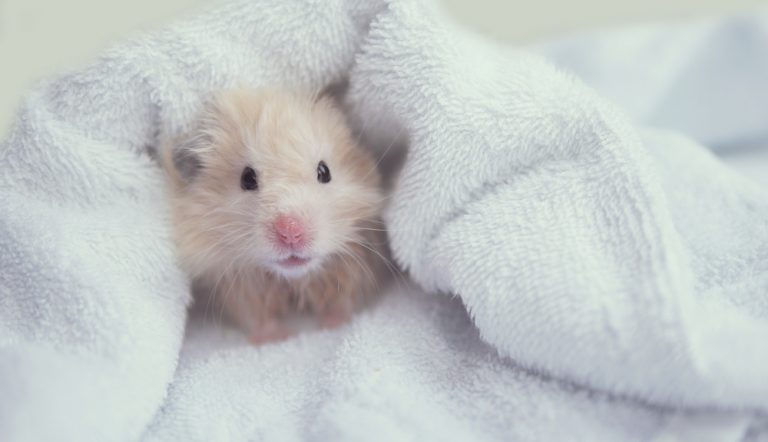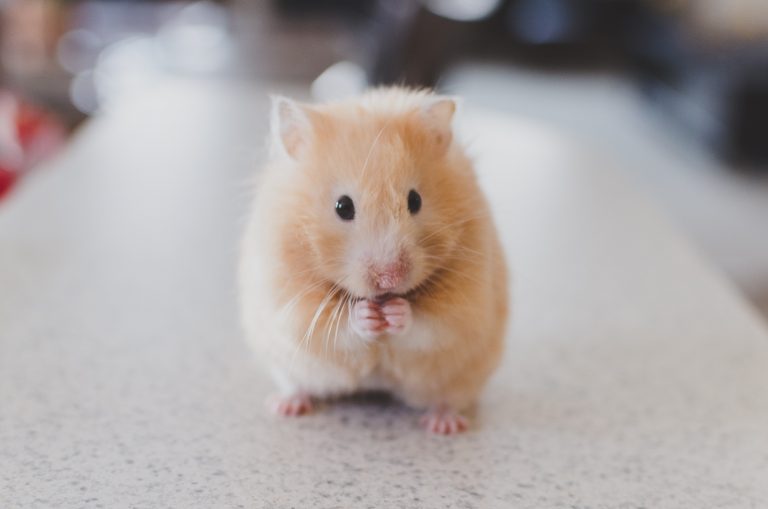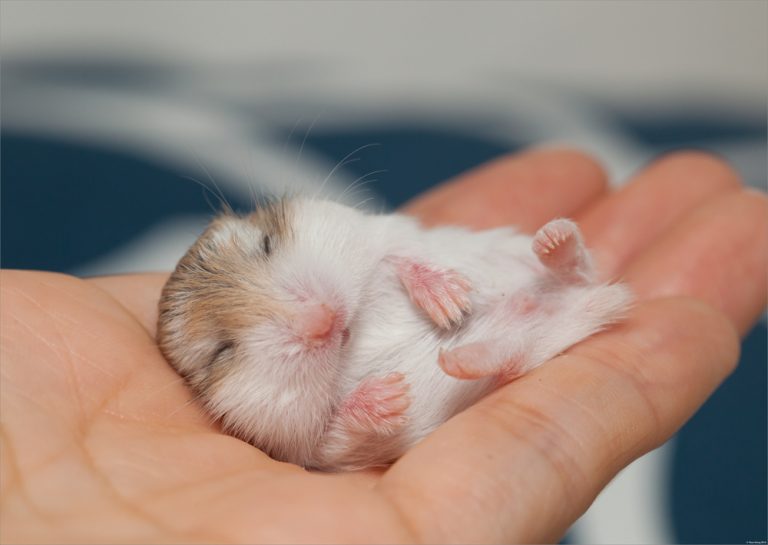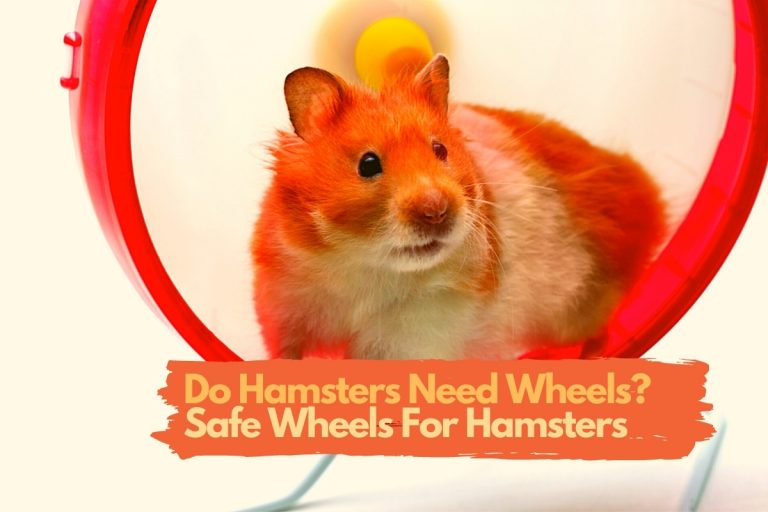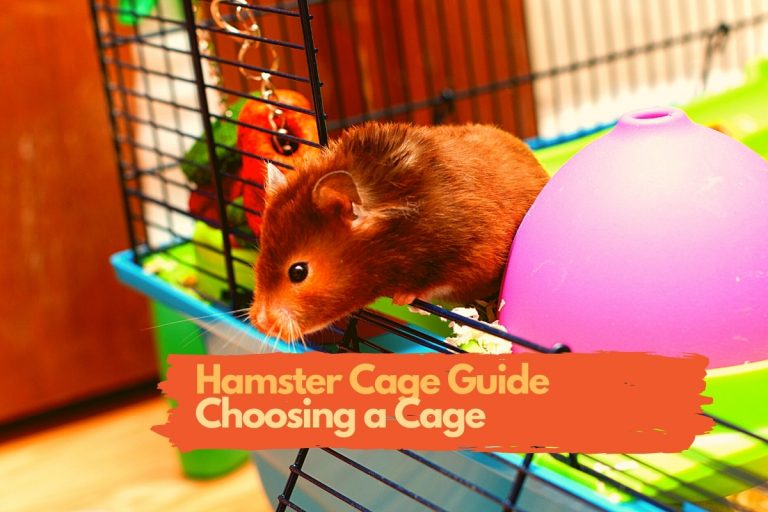Do Dwarf Hamsters Need an Exercise or Running Wheel?
Dwarf hamsters are active pets that need to get enough exercise to prevent obesity and stress. They love running around and need plenty of space to do so. Most hamster owners want to give their dwarf hamsters the possibility to be as active as they would be in nature. The most common product for this is an exercise wheel. But do dwarf hamsters need an exercise wheel?
Dwarf hamsters are active pets and a wheel can help get them enough exercise. Most dwarf hamsters will use a wheel and run several miles each day. A wheel should be at least 20 cm (8″) in diameter, with a solid surface (no mesh or rungs). A metal or wooden wheel is most suitable for dwarf hamsters.
Exercise wheels are a popular and necessary accessory in dwarf hamster cages. Most of the wheels are made from plastic and aren’t suitable for chewing dwarf hamsters. It can sometimes be challenging to get the right exercise wheel for your dwarf hamsters, and even when you get the right one, there’s still a risk that problems might arise.
This article’s sizes don’t apply to Syrian hamsters, which are larger than dwarf hamsters. For Syrian hamsters, you should read the following article: do hamsters need wheels?
In this article, you’ll learn why dwarf hamsters need wheels to stay active and healthy. You’ll learn everything there is to know about exercise or running wheels (including common issues), so you can choose the best one for your dwarf hamsters.
This site contains affiliate links to products we recommend and use ourselves. We may receive a commission for purchases that you make through these links. If you’re interested in learning more about our affiliate links, please visit our (affiliate) disclaimer.
Why Does a Dwarf Hamster Need a Wheel?
Dwarf hamsters need a wheel to get enough exercise and to mimic their natural behavior. They have an extensive territory in the wild and are very active creatures that run a lot. In the wild, dwarf hamsters will run several miles while foraging and will use their running skills to escape predators.
A pet dwarf hamster will need to get the same activity to stay healthy and free of stress. You can do a lot to assure that your hamster remains active:
- scatter food around the cage: this mimics the foraging behavior. Your dwarf hamster will look for the food and can spend some time doing so.
- provide a large enough cage: a small cage won’t provide enough running space for your dwarf hamster. It’s recommended for dwarf hamsters to get at least a cage with 7,500 cm² of floor area and at least 60 cm (24″) in height.
- provide play-time outside of the cage: a playpen outside of the cage can ensure that your dwarf hamster gets more space to run around and have fun. If you have the space to provide a playpen you should make sure that the room is hamster-proof and keep an eye on your dwarf hamster while it’s outside of the cage.
Even if you provide these activities to your dwarf hamsters, an exercise wheel will still have benefits. Most dwarf hamsters like to run on the wheel and it provides a perfect exercise for them. Running on the wheel will keep your dwarf hamster healthy and can extend its lifespan.
What Kind of Wheel Is Suitable for Dwarf Hamsters?
Not all exercise wheels are suitable for dwarf hamsters. A perfect wheel for a dwarf hamster should:
- be made from the right material
- be large enough for a dwarf hamster
- have a suitable running surface
Plastic, wood, or metal wheels?
Most running wheels are made from plastic. These are good as long as your dwarf hamster doesn’t start chewing them. Dwarf hamsters like to chew on objects in their cage and a hamster wheel can be an easy target for your dwarf hamster.
Ingestion of plastic is dangerous for any pet, including for dwarf hamsters. So a chew-proof (metal) or safe to chew wheel (wood) is much better.
What size should the wheel be?
An adult dwarf hamster needs a small to medium-sized hamster wheel that is at least 20 cm (8 inches) in diameter. The wheel should be big enough to allow your dwarf hamster to run in a comfortable angle with a straight back.
If you’ve got a larger dwarf hamster, you might need a larger wheel., The wheel should always let your dwarf hamster run with a straight back to prevent problems. A wheel with a diameter between 20 and 30 cm (8 to 12 inches) is big enough for dwarf hamsters, with the largest diameter being for large dwarf hamsters.
What should the running surface look like?
When you’re thinking of an exercise wheel, the chances are that you imagine a metal wheel with rungs and gaps between them. These kinds of wheels used to be very popular but are dangerous for pets. Your dwarf hamster can get bumblefoot (painful sores) from walking on rungs and mesh and get it by running on such wheels.
Choose an exercise wheel with a solid running surface without mesh and no rungs. Most modern hamster wheels provide such a solid running surface and are safe to use.
Risk Associated With Running Wheels
If you choose a wooden or metal running wheel that’s large enough and has a solid surface, there’s no risk that your dwarf hamsters get its feet stuck between the rungs and there’s no risk that they will ingest plastic.
You do have to understand that there’s an inherit risk with running wheels:
- your dwarf hamster can become obsessed with running on it
- running (for a long time) can sometimes cause sores
Stereotypical behavior
Running on a wheel is repetitive and does seem without a real function or goal. But dwarf hamsters do run on wheels and the motivation for them to do so is still not fully understood.
Although most dwarf hamsters will use the running wheel each day for short periods, it’s possible that your dwarf hamster will show stereotypical behavior.
The most common stereotypical behavior for dwarf hamsters is the obsessive running for a long time on the wheel.
Sores on feet
Some dwarf hamster owners have noted that running on a wheel can cause sores on the feet, even when there’s a solid surface and no gaps between the rungs. Some might even notice blood on the wheel.
The sores come from excessive running and the friction this causes. There’s little you can do about it. You can change the running wheel or limit access to the wheel. For example, keep the wheel in the cage for only a few hours during the evening and night.
Recommended Products
Dwarf hamsters should be given a wooden or metal running wheel with a solid surface and a diameter of 20 cm (8 inches). Smaller dwarf hamsters might be able to run on a smaller wheel but with the future in mind, an 8-inch wheel is better. You should always make sure that your dwarf hamster can run with a straight back.
I would recommend the following products:
- Jempet Exercise Wheel: a wooden running wheel that comes in different versions. You can choose the size depending on the size and age of your dwarf hamster. Wooden running wheels can be harder to clean but aren’t impossible to clean.
- Wodent Wheel Junior: a metal running wheel that is 8 inches diameter. There is also a larger version that is 11 inches in diameter.
If you do want a plastic running wheel (and your dwarf hamster isn’t likely to chew on it), you can get the Exotic Nutrition Silent Runner (small). This is a running wheel with a 9″ diameter that is mostly made of plastic.
It’s possible that your dwarf hamster will chew on it. Otherwise, it would make a perfect running wheel. Exotic Nutrition also has a larger 12-inch wheel but this might be too big for your dwarf hamster.
Related Questions
How long can dwarf hamsters go without a wheel?
A dwarf hamster can’t live without a wheel in a captive environment for more than a few days. There is no exact data on how long it can live without a wheel. If your dwarf hamster can’t use a wheel, provide it with at least a lot of playtime outside of the cage and/or a large enough hamster ball.
How many miles does a dwarf hamster run at night?
According to the RSPCA, a hamster can run up to 5 miles a day. Some other sources say that hamsters can run up to 6 miles a day. A dwarf hamster won’t run this distance in one long run. Your dwarf hamster will spend short periods running on the wheel, accumulating the 5 miles.
Can a dwarf hamster run too much on a wheel?
A dwarf hamster can develop an obsession with running on the wheel, running several hours each night. This excessive running behavior is often caused by stress. Find out what causes the stress and try to fix it (for example a small cage or no toys).
Is it bad for a dwarf hamster to not have a wheel?
Dwarf hamsters need a wheel to get their necessary activity each day. A wheel is a necessity in a hamster cage. It’s bad for the health of your hamster if you don’t provide a wheel. Your dwarf hamster will experience stress and will not get enough exercise, which can cause obesity.
Want to Learn More?
If you’re interested in learning more about dwarf hamsters as pets (or want to learn about other pocket pets), please read the following articles:
If you’re interested in getting (dwarf) hamsters as pets you should also definitely read our beginner’s guide to keeping hamsters as pets and our hamster care guide.

